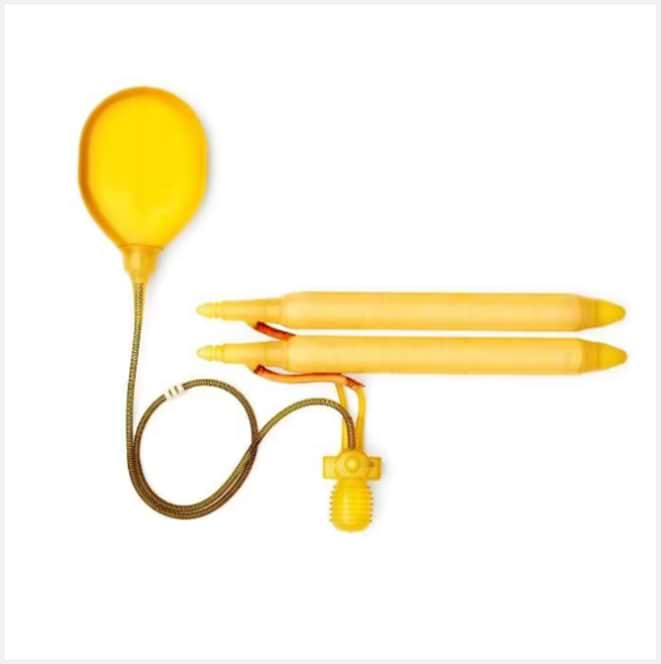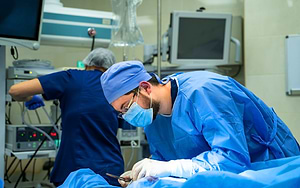Since the development of the first pill for the treatment of erectile dysfunction, the life quality of numerous men has increased significantly. However, for some men, drug treatment is ineffective or unsuitable due to medical reasons. In these circumstances, penile implant surgery may be recommended.
The History of Penile Implants – How Did It All Start?
Erectile dysfunction (ED) is defined as the consistent and recurrent inability to acquire or sustain an erection of sufficient rigidity and duration to engage in satisfactory sexual intercourse. Studies have shown that up to 18.5% of men aged older than 20 years suffer from ED. However, despite its high prevalence, medical knowledge about ED has remained quite limited for many decades. It was only in the 1970s, that advances were made in the area of molecular biology and the understanding of penile physiology and the mechanisms underlying ED development. At that time, it was Dr. Brantley Scott who had developed the first penile implant prototype. Like a true scientist, he conducted numerous experiments, including in animal models, to deeply study the anatomy of the penis and the erectile mechanism. The development of the first penile implant was likewise made possible thanks to the progress made in using silicone medically, as it offered a resilient and flexible material with biocompatibility, which lowered infection rates significantly. At the end of this process, Dr. Brantley was successful in creating a medical device that received FDA approval, and the rest is history.
What Exactly is a Penile Implant?
A penile implant (or prosthesis) is a medical device surgically implanted into the penis for the treatment of ED in a medical procedure called ‘penile implant surgery.’ The procedure is regarded as relatively simple, where an implant is inserted into the penis through an incision made in the scrotum or underneath the pubic bone. A penile implant surgery enables a man to get a rigid erection whenever he pleases.
There are two types of implants: a semi-rigid implant and an inflatable implant.
The semi-rigid (malleable) implant consists of two rigid, bendable rods that are implanted in the penile erectile bodies (corpora cavernosa), which form part of the erectile mechanism. Anatomically, the erectile bodies are elongated hollow cylindric structures that are positioned next to each other, resembling a double-barreled shotgun with two chambers side by side. The rods are implanted into the erectile bodies keeping the penis hard at all times. However, because they are malleable and bendable, if a patient wants an erection, he can bend the penis up, and if he doesn’t, he can bend the penis down to help conceal it under the clothing.

In the pictures: a semi-rigid implant. Taken from https://emedicine.medscape.com
An inflatable implant consists of two flaccid cylinders (like inflatable balloons) implanted in the erectile bodies, a scrotal pump, and a reservoir with fluid implanted in the pelvis. The implant enables the penis to remain fully flaccid when an erection is unwanted. Before the sexual activity, the patient squeezes the pump to send the fluid from the reservoir to the penis, making it rigid and erect. When sexual activity is completed, pressing a button will send the fluid back to the reservoir and the penis will return to the flaccid state. Notably, all parts of the implant are inside the body and completely invisible on the outside. This can ease any embarrassment in situations such as a shower in a locker room at the gym.

In the pictures: an inflatable implant. Taken from https://emedicine.medscape.com
The choice between the two types of implants is made based on the patient’s past medical history, his specific needs, his lifestyle and his hand function (as limited manual dexterity, such as in Parkinson’s disease, might make it challenging to operate a malleable device) as well as other issues. However, it can be said that most men prefer inflatable penile implants as they provide a very natural erection.
Surgery may be performed either under general or spinal anesthesia. Inflatable penile implant surgery takes about 1-2 hours and one for a semi-rigid implant takes 30-60 minutes. The patient can leave the hospital the day after surgery, though there is a recovery period of few weeks. The implant can be used within 4-6 weeks after surgery, and within three months, it becomes fully integrated into the body.
Who Might be the Ideal Patient for a Penile Implant?
Years ago, in the era before the development of PDE5 drugs like Viagra or Cialis, penile implant surgeries were much more prevalent. But today, erectile dysfunction medications are available, constituting first-line therapy for ED. Normally, they promote penile blood vessel dilatation simply and efficiently, causing increased blood flow to the penis and an erection. However, if drug treatment is inefficient or not possible (for example, due to side effects or due to the use of other drugs that interact with PDE5 medications), second-line therapies will be offered, including penile vacuum pumps (devices into which the penis is inserted and the vacuum they create causes increased penile blood flow and an erection) or penile injection therapy of vasodilating substances.
Patients with moderate-severe ED and Peyronie disease can also benefit from a penile implant surgery as a treatment for both conditions. However, this is a more challenging surgery owing to the anatomical distortion of the penis due to scar tissue formation. In addition, in certain cases, residual curvature remains after the implant placement, and additional treatment will be needed to straighten the penis to allow for satisfactory intercourse.
Surgery Safety and Implant Durability
Penile implant surgery is considered a safe treatment option for the management of ED, with high success rates of 85-95% and with novel technologies that have made it even safer than before. For example, implants with antibiotic coating protect against infection development during or after surgery, reducing the risk of infection to 2-5%. Unstable diabetic patients, however, have a higher infection risk. In addition, the risk of injuring adjacent organs, such as the urethra and the bladder, is even lower. Likewise, as these are mechanical implants, there is no risk of rejection.
Regarding durability, advances in materials have increased the mechanical and functional durability of penile implants. Usually, after 7 years, about 90% will still function well, and after 10 years, the risk of mechanical malfunction is 15%. However, as time goes on, these devices become less durable and might break. In these cases, they will need to be surgically replaced with a new implant.
It’s important to remember that penile implant surgery is irreversible. Therefore, if the implant needs a replacement at some point, if it becomes infected or dislodged in the future, it would be impossible to seek other treatment options, and there will be no erection. For this reason, it’s essential to ascertain with the physician that all other treatment options for ED have been exhausted and that surgery will provide an adequate solution for the patient. Generally, semi-rigid implants have a lower infection rate and are usually used in repeated surgeries due to infection.
The Company hereby clarifies that the information contained on the website is for informational purposes only, and is not intended to be a substitute for professional medical and healthcare advice, and does not constitute medical advice or opinion. Always seek the advice of your physician or other qualified health provider with any medical condition or question you may have regarding a medical condition.





